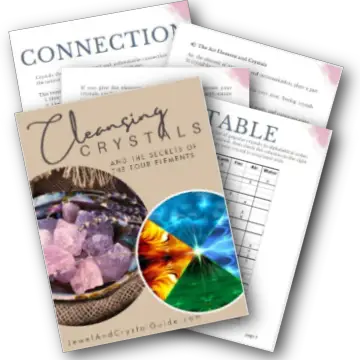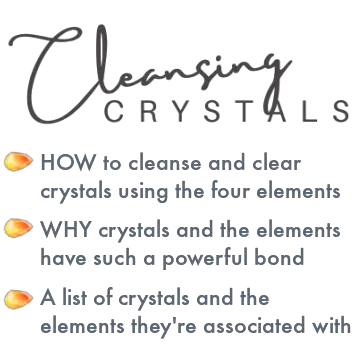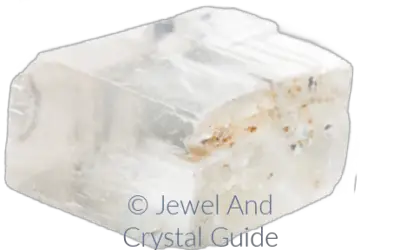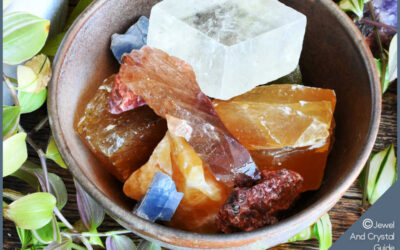Because pink amethyst is such a valuable crystal, there are many fakes on the market. Sometimes sellers know they’re fakes and other times they don’t.
Fake pink amethyst is either:
- Made from glass
- Light purple amethyst that looks pink and is sold as the more expensive pink amethyst
- Pink-colored amethyst from another country, not the original pink amethyst from Argentina
Let’s look at a few things you can do to get a better idea if a pink amethyst is real or not.
By the end of this post, you’ll have 16 ways to tell if a pink amethyst is real or fake.
Real pink amethyst…
Has a specific gravity of 2.65
A fairly accurate way to tell if pink amethyst is real crystal and not glass is to measure its specific gravity. Don’t be scared – I’ll show you how!
To get an object’s specific gravity, we measure how much space it takes when we drop it in water.
The specific gravity of pink amethyst is 2.65, which can be measured using a digital scale that shows at least two decimal points.
Here are the steps to calculate the specific gravity of a pink amethyst crystal:
- Weigh a container and write down the weight up to two decimal places. Make sure the container is large enough to hold water and the pink amethyst you are testing.
- Add water to the container and take this measurement, again with two decimal places.
- Put the crystal in the water. Now write down this measurement up to two decimal places.
- Subtract the weight of the empty container from the weight of the water-filled container and the water and crystal weight. You now have the true weights of the water and the water and crystal together.
- Divide the true weight of the crystal and water weight by the true weight of the water-only weight. This gives you the crystal’s specific gravity.
- If the specific gravity is 2.65, then you have a real crystal in your hands.
This method confirms that the piece is real crystal and not glass, but it won’t tell you if it’s a pink amethyst or not.
If you want to be sure it’s pink amethyst (and not rose quartz, purple amethyst, or another crystal), you need to use some of the other methods described in this post.
Has different shades of pink in it
Pink amethyst is pink quartz.
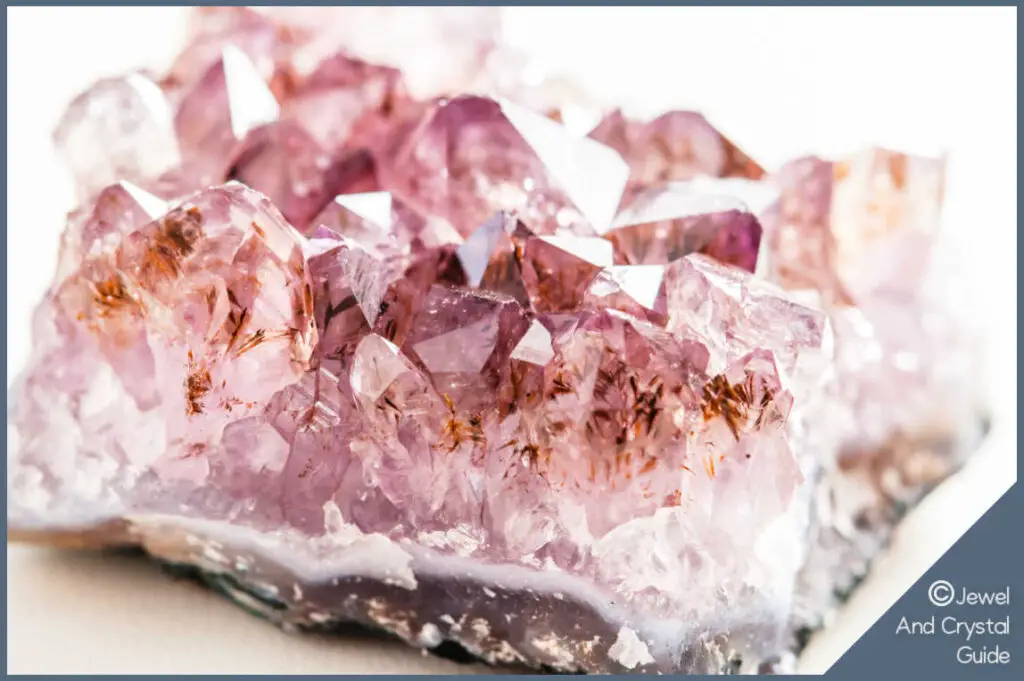
Genuine pink amethyst is always pink, even if it’s different shades of pink – from light (almost white) to medium pink or even burgundy. Quartz that is any other color will have a different name, such as clear quartz or citrine, which is yellow quartz.
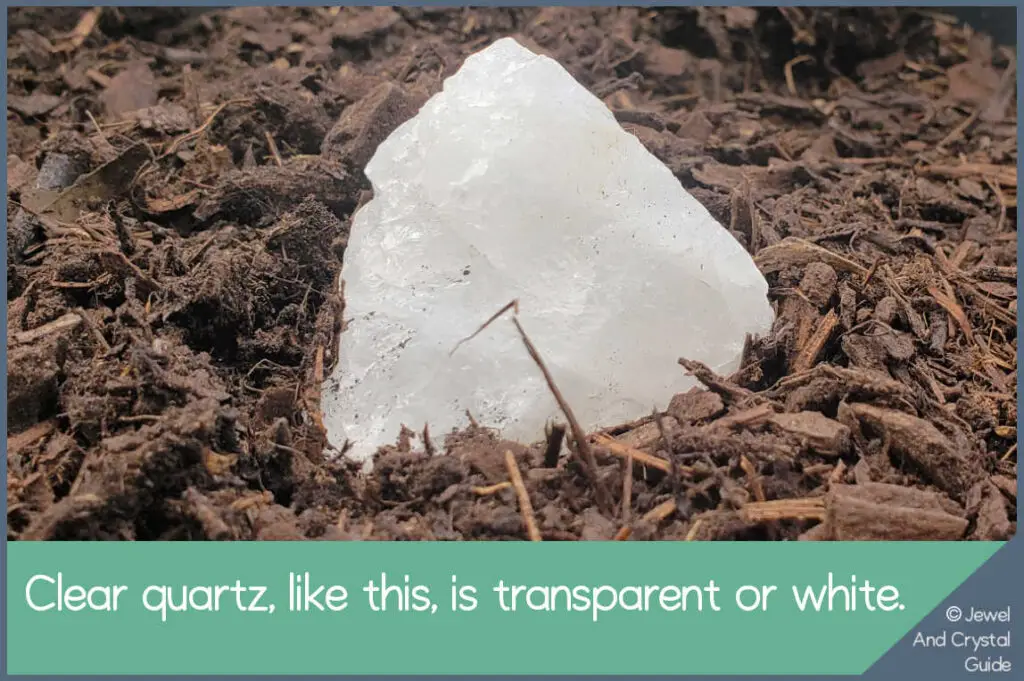
Look closely at a real piece of pink amethyst, especially a smooth, tumbled piece, and you’ll probably notice that the crystal has quite an even and consistent coloring, without many swirls or color zones.
If you notice any inconsistencies in these characteristics, such as uneven color or texture, it may be a sign of a fake or treated crystal.
The bigger the piece the easier it is to notice the colors within. If you are looking at a very small piece of pink amethyst, you might struggle to see color variations.
If you hold several pieces of pink amethyst next to each other, especially if you got them at different times or from different places, the shades of pink should vary, with some pieces being darker or lighter than others.
If you suspect a crystal may be dyed glass, look closely at cracks in the stone. If the color is darker or more distinct there, it’s probably dye.
But sometimes nature makes a crystal that’s so perfect it looks fake. If you buy from a reputable seller and it’s an expensive, perfect-looking pink amethyst, then you might be lucky to have a real pink amethyst that’s a beautiful pink and free from imperfections.
The smaller the piece the easier it is to be close to perfect.
Fades in sunlight
Over time, real pink amethyst fades or changes color if it’s left to stand in strong sunlight for a long time, though it’s perfectly safe to use sunlight to cleanse and charge the crystal if you follow these simple instructions.
Fake pink amethyst, made from glass, does not usually lose its color when left outside, unless it’s left outside permanently for many months or years.
Is not see-through
To test if a stone is see-through, put it on a printed picture or words on a piece of paper or a page from a magazine. If you can see a distorted version of the picture or printed words under the stone, then the stone is considered see-through or transparent.
Real pink amethyst is not transparent or see-through. If you put real pink amethyst on a piece of paper with words printed on it, you will not be able to see the words through the crystal at all.
If you use a thin piece of pink amethyst with light swirls and areas in it, you may be able to see the colors of the printed words showing through a bit, but that’s all.
Most fake pink amethyst is made from glass. Glass is transparent or see through, and it magnifies whatever you look at through the glass.
If you hold a fake glass pink amethyst crystal against a printed page, you will be able to see a distorted view of the printed page through the glass.
Is uneven with irregular markings
Real pink amethyst is irregular in shape, with cracks, flaws, and markings on it when it’s raw from the earth. Fake pink amethyst is symmetrical, with the same shape and often the same markings on both sides.
Crystals naturally have lighter and darker areas in them, which you can see when you hold them up to the light. But these areas are always irregular, so they are all shapes and sizes.
Inclusions, or natural imperfections, are common in crystals and can help determine their authenticity.
Genuine pink amethyst crystals may have small inclusions, such as tiny gas bubbles or mineral inclusions, which are typically seen as small specks or lines within the crystal.
And if the crystal appears to be too perfect or lacks any inclusions, it may be a sign of a synthetic or fake crystal.
If you look at several pink amethyst crystals from the seller, they should each be different. If some of them look the same, like carbon copies of each other, then they are probably fake.
There’s a chance they were cut from the same part of a real crystal, but this is a sign you need to do more research.
Shows white swirls
Pink amethyst often has white and sometimes burgundy whirls inside.
These swirls are fractures that healed as the crystal formed in nature. The bigger the piece, the easier it is to see the swirls.
If you see swirls, then it’s a good chance the crystal is real.
Never has raised mold marks on the outside
Real tumbled pink amethyst is perfectly smooth, without any raised lines on it. But fake pink amethyst that’s made from glass sometimes has a line or visible marking on it from the mold that made it.
If you want to know what sort of line to look for, take a close look at a glass coffee mug. You should see a line running vertically, from top to bottom, along at least one side of the mug.
This line is a sign that the mug was made in a mold and not out in nature.
Can be tumbled
Pink amethyst is strong enough to be tumbled.
Tumbling takes a raw crystal from the ground and makes it smooth, round or oval-shaped, and shiny.
This is done by putting the crystal into a machine that rolls the crystal around with rocks. As the rocks and crystal roll around together, the rocks remove the crystal’s rough edges.
If you buy a smooth, shiny piece of pink amethyst that’s been tumbled, it’s real crystal. Glass shatters in a tumbler because the rocks are too rough for it to handle.
If you want to do your own tumble test to see if you have real crystal or a glass fake, use this hobby rock tumbler kit to tumble the piece and see if it survives.
If it does, it’s probably real crystal. If it breaks up into small pieces or shatters, it’s glass.
Can’t be scratched with steel or glass
Real pink amethyst is a 7 on the Mohs scale, a scale that measures how hard minerals are. This means that pink amethyst is stronger than many other hard materials, such as copper, glass and steel.
If you try to scratch a real pink amethyst with a copper penny, shard of glass, or a steel nail or knife, you won’t be able to leave a mark on the crystal.
Can scratch glass and steel
Real pink amethyst is stronger than steel.
To test if a pink amethyst is real, scratch it on a piece of steel (knife, watch casing, or steel file) or glass.
If the crystal scratches the steel or glass, then it’s real quartz. You may need to look at the steel or glass through a magnifying glass to see if there is a scratch or not.
Feels cooler than glass
Real pink amethyst is usually cooler than fake amethyst made from glass, even when they’re kept next to each other on the same surface.
You should be able to feel the slight temperature difference if you place the items on your lips.
Try the pink amethyst on your lower lip first, then bring an empty glass to your lip to see if you can feel a difference in temperature.
If you can’t feel any difference and you want to be sure, use an electric thermometer to measure the temperature of each.
Is heavier than glass
Real pink amethyst has a solid, heavy feel to it, which is one of the ways to tell if a crystal is real or not.
Pink amethyst is heavier than glass, especially when comparing large crystals. If you hold crystals in your hands or put them on the scale, a fake crystal weighs less or feels lighter than a real one because the fake is probably made of glass.
You can also use the specific gravity method described earlier to measure the stone’s relative density. A real pink amethyst has a specific gravity of 2.65 and glass has a specific gravity of 2.5.
Is about the same price, no matter where you buy it
There are a limited number of pink amethyst suppliers. These suppliers sell crystals to retailers for about the same price, who sell them on to you and me.
Retailers must sell the crystals for a certain amount to make a profit, which is more than what they paid to their supplier.
So if you find pink amethyst that’s on sale for a price that’s too good to be true (much cheaper than other sellers), it’s probably fake crystal.
Here’s what makes pink amethyst so valuable (and a tad pricey).
Is called pink amethyst by the dealer
If a reputable dealer calls the stone pink amethyst and nothing else, then it’s probably pink amethyst.
But some dealers give other crystals, like Brazilian rose amethyst, or even fakes captivating names to make them sound more exciting and make you more eager to buy them.
If the crystal has some unusual, catchy name that you’ve never heard of before, even if it looks like pink amethyst, then it’s probably a marketing trick.
Ask the dealer where the crystal comes from. If it doesn’t come from Patagonia in Argentina, then it isn’t pink amethyst.
Comes from a trustworthy seller
If you buy pink amethyst from a seller that you know you can trust, and that seller tells you the crystal is real, then it probably is.
Some things you can do to make sure the seller can be trusted is:
- Do some research on the seller, to look for bad reviews or complaints that other people have made. You can also speak to others or join Facebook groups and ask for recommendations.
- Check the seller’s website to see what information they give and if they look authentic.
- Ask the seller to provide proof on where they got the pink amethyst from. All pink amethyst comes from Patagonia in Argentina, South America.
- Buy pink amethyst jewelry that is certified by the Gemological Institute of America (GIA) or the gem certification body in your country.
Can be confirmed by a professional
If you must know if a stone is real pink amethyst or not, and none of the above methods have given you a definitive answer, then ask a professional crystal dealer, lapidist, or appraiser to take a look at the crystal.
A professional will have the tools, knowledge, and experience to give you a better idea if a crystal is real or not.





